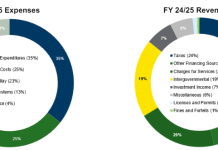By Jim Lamzela
Special to Ottawa Construction News
Most manufacturers have a hard time figuring out what the secret is to getting architects to spec their products. The truth is, there isn’t a secret formula that all architects use. However, there are a few things that you can do that will make the architect realize that you are the best candidate for the product
The following are six helpful hints for getting an architect to spec your product:
1. Use case studies and testimonials
Architects have stated in recent surveys that case studies are the most important piece of content they need on a manufacturer’s or supplier’s website when they are looking for products to be spec’d in.
If you want your product selected, you need to prove to them that your products are going to work and the best way to do that is by showing them how your products have worked in projects just like theirs before.
Be sure your case studies are easy to read and something that people want to share. Everything you communicate to them should tell them you understand their priorities. One of the best ways of doing that is by giving them well laid out documents. Use multiple images to tell the story and to top it off, use a headline that perfectly outlines the problem the product is solving in the study.
Creating a case study when there isn’t one
A supplier or manufacturer rep may really feel that their products would improve the value of the buildings where they would be installed and even get really close to closing a deal but it ends up falling through. This usually happens after they are asked by the architect where else their products are being used and by whom. When this can’t be answered, the deal is usually over.
You need to be creative. Bartering with prospects and exchanging your products for doing a case study would solve this problem and eventually help you establish a name in the region. So, the next time an architect asks you where these products are being used, you could offer three or four different places.
Testimonials
Architects tend to look to other architects when making a decision, versus trusting brand websites alone. That is why testimonials are so important
Testimonials not only showcase your products, they showcase the relationships your products have generated. When an architect puts his reputation on the line for your products, other architects are going to take their statements seriously.
Videos are excellent for testimonials. They are easy and inexpensive to create and they get really good proven results.
2. Give samples to the architects
Giving samples to architects has been proven very valuable to closing a deal. When an architect has to decide between your product and another, having a sample is definitely a plus in helping them make up their mind.
If possible, let them get their hands on your products: Have samples with you to get your quality product into the architect’s hands which will move your product into the realm of possible spec choices. Make it as easy as possible for them to use your products: Spec and models are essential to showcasing how your products function as part of the bigger picture.
3. Make it easy for an architect to choose you with spec sheets and models:
If an architect can’t find everything they need to know about your product on your website, they will leave that site and find a competitor. Providing this information shows an architect immediately how your products will work with the other products they have already specified with their landscape, timeframe, etc.
The key is to focus less on selling your products and focus more on building relationships with architects and specifiers.
4. Deal with objections
You must deal with their objections: Always have case studies and testimonials that will back up your claims with real projects and people.
5. Get in early
Once a project goes out to bid, it’s probably too late. You need a way of identifying projects while they are in the early in-design phase. Knowing about a project when it’s still weeks or even months away from going out to bid gives you the window you need to approach the owner or architect and get your products spec’d in.
6. Identify bidders, low bidders or awarded contractors/strong>
Do you have a product that you sell to contractors? For example, let’s say you happen to sell a specialized roofing product to roofing contractors. Sure your team could just cold call all the roofers in your area and see if they need your products but in today’s world, sales reps like making cold calls almost as much as people like getting them. What if your team knew instantly anytime a contractor attended a pre-bid meeting, picked up a set of plans, showed any interest in bidding or was announced as the low bidder or awarded contractor? How would that increase your odds of winning the business? By using a service like DataBid, you could have a real advantage over your competition. Getting ahead of your competition means knowing about in-design projects first and knowing who the awarded contractor on the project is.
Place your company as a leading expert on the types of products you deliver and provide them with all the information they need when researching and selecting products and you’ll be growing your business in no time.
Jim Lamzela is president of Databid.com






